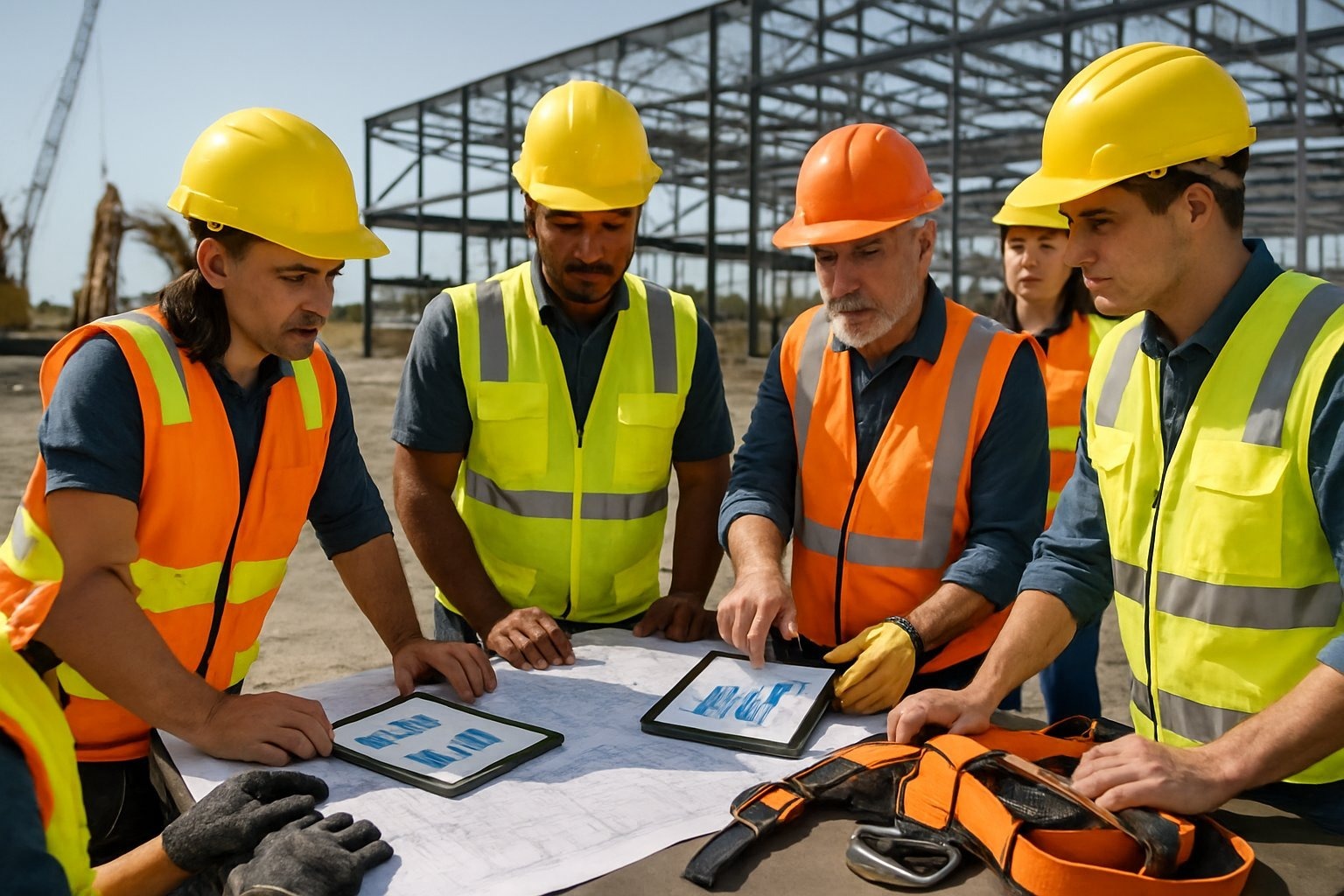
Construction Safety KPIs: From Field Data to Proactive Insights
Construction safety performance has long depended on reactive metrics that only explain what went wrong after the fact. Many companies track basic safety statistics, but they struggle to connect Job Hazard Analyses (JHAs) with real-time performance data that could prevent incidents before they happen.
The breakthrough comes from transforming static safety documentation into dynamic, predictive metrics. This shift moves beyond counting injuries to predicting and preventing them through continuous field data collection and intelligent analysis.
Modern construction safety management requires bridging the gap between planned safety measures and actual field conditions. By capturing ground truth data and converting it into actionable intelligence, teams can finally move from reactive reporting to proactive risk prevention—protecting workers and improving project outcomes.
The Missing Link Between JHAs and Performance Metrics
In most projects, JHAs remain disconnected from safety performance measurement systems. This gap prevents organizations from seeing whether their hazard identification efforts actually improve safety outcomes.
Traditional construction safety KPIs often focus on lagging indicators like injury rates. These compliance-driven numbers fail to measure whether JHAs actively reduce risk on the jobsite.
Key disconnects include:
- JHAs completed versus hazards actually controlled
- Time spent on analysis versus quality of risk mitigation
- Worker participation rates in JHA processes
- Correlation between JHA frequency and incident reduction
The solution is an integrated measurement system—one that connects hazard analysis activities to measurable outcomes. Without that connection, JHAs remain administrative tasks instead of effective risk management tools.
Learn how SafetyVue connects JHA quality to measurable improvement in our blog From Hours to Minutes: How SafetyVue AR Streamlines the Job Hazard Analysis (JHA).
Step One — Capturing Ground Truth with SafetyVue AR
SafetyVue AR transforms how teams collect safety data by capturing a complete, objective record of jobsite conditions in minutes. Using industrial-grade smart glasses, a supervisor simply performs a hands-free video scan. Within minutes, an AI-generated JHA first draft appears in their inbox—complete with identified potential hazards and recommended control measures.
Verified Capabilities:
- Hands-free, rapid site scan
- Objective, timestamped, verifiable data
- AI-generated JHA draft for expert review
Each scan provides the ground truth—structured, standardized data ready for analysis inside SafetyVue Insights.
Learn how AR-based safety data capture builds a defensible record in our post Safety Data Capture Liability: Building a Defensible Record That Protects Your Enterprise.
Step Two — Continuous Field Input via the SafetyVue Mobile App
Mobile reporting ensures the flow of real-time safety data from every jobsite. With the SafetyVue Mobile App, workers log observations, near-misses, and incidents the moment they happen—no paperwork, no delay.
Every entry automatically links to the relevant project, asset, and worker profile. This creates a unified safety record that enhances accuracy and connects frontline actions directly to your construction safety KPIs.
Key Field Data Benefits:
- Real-time observations and incident capture
- Offline functionality for remote sites
- Automatic linkage to assets, personnel, and history
The result: continuous input that enriches the dataset fueling the SafetyVue Data Flywheel—our self-reinforcing intelligence system where every piece of field data makes every other piece smarter.
Explore more in Why Your 2026 Safety Plan Needs a Mobile App.
Step Three — Insights Transforms Data into Predictive Construction Safety KPIs
Once AR and mobile data flow into SafetyVue Insights, the platform converts that information into predictive intelligence. This is where construction safety KPIs evolve from static reports into actionable foresight.
Examples of Predictive KPIs:
- PPE compliance trends by project and crew
- Near-miss to incident ratio analysis
- Recurring hazard types by job phase
- Leading indicators predicting potential incidents
Insights doesn’t just show what happened—it forecasts what might happen next. That predictive visibility empowers safety leaders to focus training, allocate resources, and prevent incidents before they occur.
From Information to Intelligence
Raw safety data alone can’t drive prevention. It’s the integration and analysis that create meaning.
SafetyVue Insights connects AR scans, mobile observations, and historical records into a single, predictive intelligence engine. By identifying correlations—such as recurring hazards linked to specific assets or training gaps—it converts disconnected reports into measurable, leading indicators.
Construction safety KPIs then evolve from compliance metrics to strategic management tools. They tell you where risk is building, not just where it’s already occurred.
Learn more about connecting behavioral and environmental data in Beyond the Clipboard: Capturing Total Site Risk.
Turning Data into Action
KPIs only matter when they drive decisions. SafetyVue Insights transforms data into directives, allowing managers to prioritize actions based on predictive risk.
When a KPI trend reveals an increase in fall-related near-misses, for example, the system pinpoints affected sites or crews, enabling rapid, targeted intervention.
Data-Driven Action Steps:
- Assign KPI owners for accountability
- Establish thresholds and auto-alerts for anomalies
- Track corrective action closure rates in real time
This continuous improvement loop ensures that every data point feeds into a cycle of learning and prevention—amplifying the value of your construction safety KPIs.
The Intelligence to Prevent
At SafetyVue, our mission is simple: Every worker home safe, every shift.
We don’t just sell digital checklists—we deliver The Intelligence to Prevent. By transforming every AR scan, observation, and near-miss into predictive construction safety KPIs, we help safety professionals see risks forming before incidents occur."
Because true intelligence doesn’t just measure safety—it makes safety happen.
Start turning your field data into predictive insight. Request a demo of SafetyVue Insights.
FAQS
What is the most significant cost associated with construction accidents?
What is the most significant cost associated with construction accidents?
What is the most significant cost associated with construction accidents?
What is the most significant cost associated with construction accidents?
What is the most significant cost associated with construction accidents?
Tim Wolter




